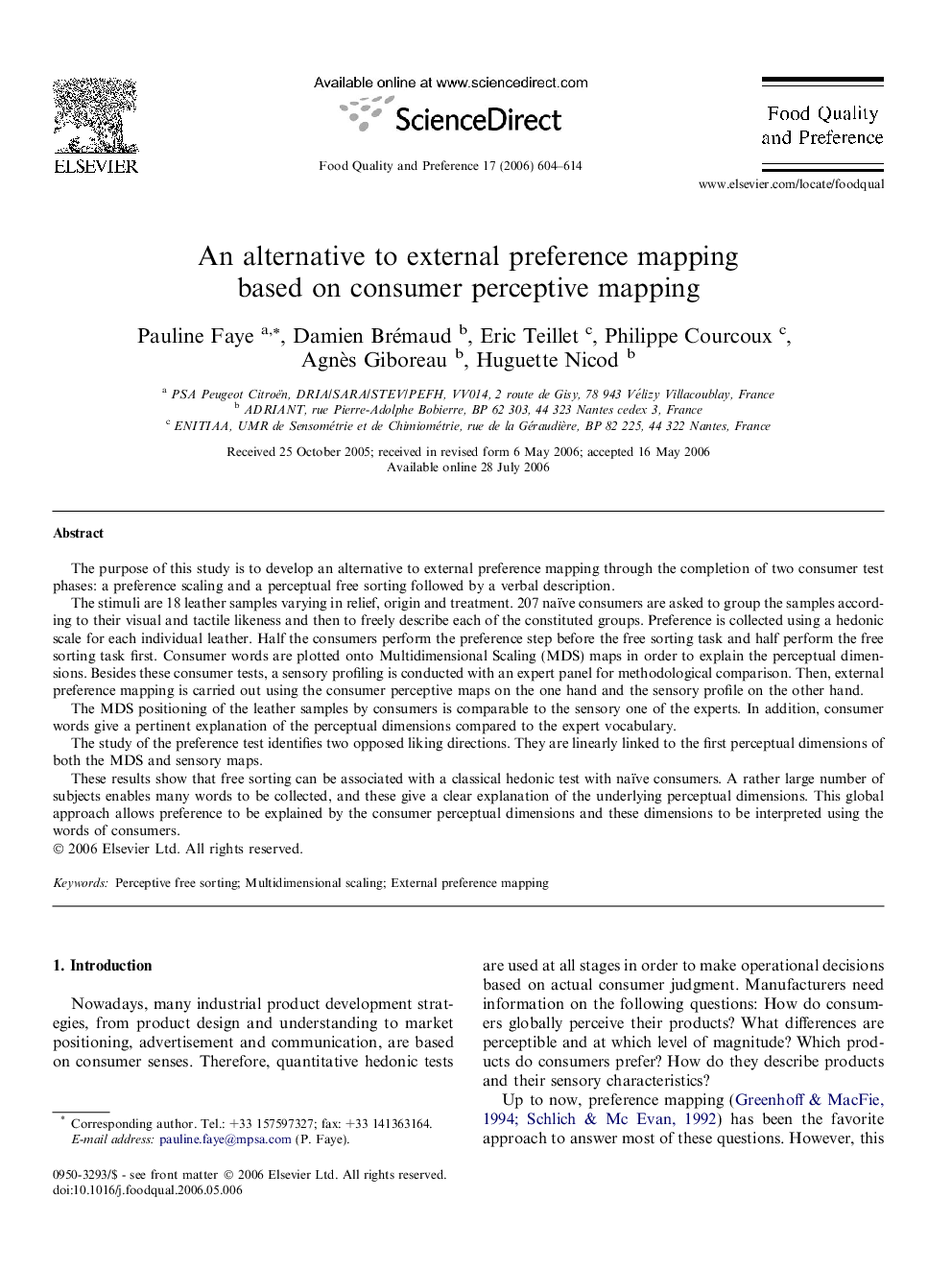| Article ID | Journal | Published Year | Pages | File Type |
|---|---|---|---|---|
| 4318214 | Food Quality and Preference | 2006 | 11 Pages |
The purpose of this study is to develop an alternative to external preference mapping through the completion of two consumer test phases: a preference scaling and a perceptual free sorting followed by a verbal description.The stimuli are 18 leather samples varying in relief, origin and treatment. 207 naïve consumers are asked to group the samples according to their visual and tactile likeness and then to freely describe each of the constituted groups. Preference is collected using a hedonic scale for each individual leather. Half the consumers perform the preference step before the free sorting task and half perform the free sorting task first. Consumer words are plotted onto Multidimensional Scaling (MDS) maps in order to explain the perceptual dimensions. Besides these consumer tests, a sensory profiling is conducted with an expert panel for methodological comparison. Then, external preference mapping is carried out using the consumer perceptive maps on the one hand and the sensory profile on the other hand.The MDS positioning of the leather samples by consumers is comparable to the sensory one of the experts. In addition, consumer words give a pertinent explanation of the perceptual dimensions compared to the expert vocabulary.The study of the preference test identifies two opposed liking directions. They are linearly linked to the first perceptual dimensions of both the MDS and sensory maps.These results show that free sorting can be associated with a classical hedonic test with naïve consumers. A rather large number of subjects enables many words to be collected, and these give a clear explanation of the underlying perceptual dimensions. This global approach allows preference to be explained by the consumer perceptual dimensions and these dimensions to be interpreted using the words of consumers.
